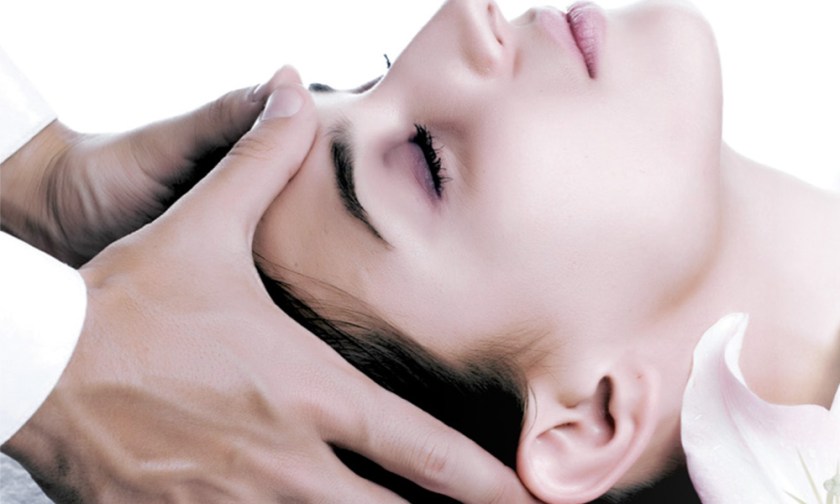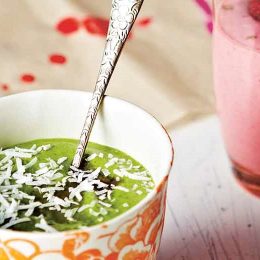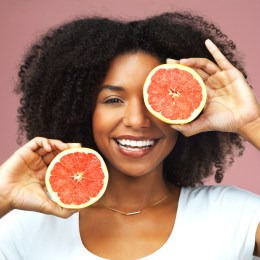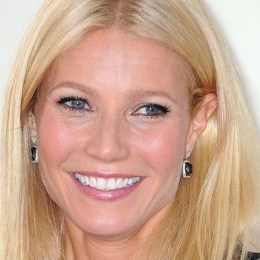Multi-millions of dollars are spent by Australians every year, at salons and on homecare products, in quest of lusher locks. The emphasis is almost entirely on treating hair – the place from which it springs seems something of an afterthought.
In Asia, care of the scalp is considered as important as the upkeep of facial skin, and fundamental to healthy hair. The concept is building here and poised to become a new growth industry.
SCALP HEALTH LINK TO HAIR LOSS
When scalp health is compromised it diminishes the follicles’ capacity to generate new growth.
A significant factor is simply growing older. As the scalp ages, tissue surrounding hair follicles hardens and so the follicles have to work harder to perform, with decreasing efficiency. Result: thinning hair.
Good scalp care can stop this slowing-down effect and keep hair healthy. Additionally, there are many products that not only help reduce hair fall out but also increase the rate of growth cycles, which naturally slow with ageing.
Some products inhibit the production of dihydrotestosterone (the male hormone present in both men and women, an overabundance or imbalance of which can trigger balding), thereby slowing the rate at which hair falls out. Other active ingredients and bio-stimulators promote circulation and improve “biosynthesis’”in the hair-forming cells. These only work on non-pathogenic hair loss, so they will not be effective on men or women with genetic pattern baldness.
A GROWING CONCERN
A big breakthrough in this category is the use of growth factors combined with scalp skin microneedling to promote regrowth.
Hair Free, an Australia-wide chain of (ironically) hair removal clinics, introduced Factor G6 treatments and products, distributed by Architect of Skin, for more than six months with remarkable results
Factor G6 contains an active ingredient that is a bacterially- derived growth factor found naturally in human skin cells.
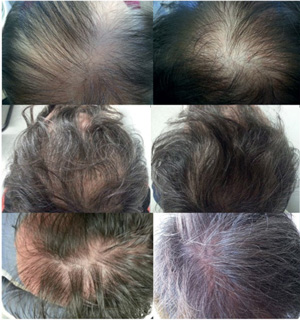 The in-clinic protocol involves massaging the solution into the scalp and then the Eclipse Micropen is used over the top to facilitate deeper penetration.
The in-clinic protocol involves massaging the solution into the scalp and then the Eclipse Micropen is used over the top to facilitate deeper penetration.
American researchers found that Factor G6 helped hair follicles form and regenerate, especially when combined with the wound-healing process that takes place after microneedling. The latter in itself stimulates regeneration of the follicles as a result of the skin’s natural recovery process.
“Our first clients showed great results, with photographic evidence of promising regrowth in as little four weeks,” says Hair Free proprietor David Ginges. “If things keep going the way we have seen so far, I think we may have a major breakthrough in the hair restoration industry.”
www.architectsofskin.com.au; www.hairfree.com.au
UNCLOGGING THE WORKS
Systemic (internal) health issues caused by factors such as hormone imbalance, illness, stress, digestive disruptions, medications, pollution etc can manifest on the scalp, clogging follicles with dead skin cells or a build-up of secretions.
If a client is using hair products inappropriate for their individual skin, this too can clog up the works. Too-harsh products will start stripping away the scalp’s protective hydrolipid film causing skin dryness or irritation – ergo, a build-up of dead cells. Too-rich or thick products (especially those containing oils, parabens and silicones) can similarly create a residue that occludes follicles.
When blocked, a follicle will become yellowy and bacterial and can eventually lead to hair loss. Products that detox the scalp and cleanse the hair follicles will help to encourage healthy hair growth.
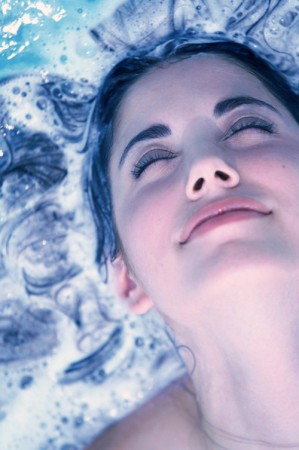 “If the scalp isn’t healthy, the hair isn’t healthy – it’s that simple,” says Karen Aubin of La Biosthetique Australia.
“If the scalp isn’t healthy, the hair isn’t healthy – it’s that simple,” says Karen Aubin of La Biosthetique Australia.
“With each and every scalp problem there is a carry-on effect to the hair. Oily hair, straggly hair, brittle and dull hair can be rectified with the right scalp program that normalises things like sebum production and strengthens the hydrolipid protective film on the scalp.
“We commonly see issues like dandruff, but the other side is irritation, itchiness and tightness – in other words, sensitive scalps. This happens when the hydrolipid film is not strong enough to defend the scalp. A professional treatment range can rebuild the scalp’s first line of defence.”
AN HOLISTIC APPROACH
In ancient Indian traditions, scalp care is as important as facial care, according to Yasmin Sadikot, founder of Australian ayurvedic skin and beauty care range OmVeda.
“The condition of the scalp and hair is reflective of overall health,” she explains.
“From an Ayurvedic perspective, the skin – which includes the scalp – is the largest organ of the body and as such absorbs what is put on it.
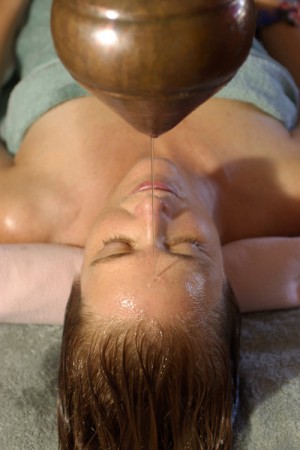 “OmVeda products help remedy and balance the scalp and hair by feeding the tissues with a combination of herbs and specific herbalised oils in the traditional and prescriptive way.
“OmVeda products help remedy and balance the scalp and hair by feeding the tissues with a combination of herbs and specific herbalised oils in the traditional and prescriptive way.
“These prescriptive formulas that can address everything from shedding, dryness, brittleness and greying to scalp itchiness or oiliness, as well as keeping hair lustrous, strong and silky.”
Yasmin says that scalp massage is also a key aspect of scalp treatment, to encourage circulation and relaxation – essential to hair and overall health.
This burgeoning growth industry of scalp care is an exciting chapter for the business of hair and beauty, in terms of revenue opportunities and enhancing the customer’s experience and results.
But it is also wise to manage expectations of these new products and treatments. When a client comes to you with scalp issues and/ or hair thinning, take the time to talk to them about their lifestyle and health history, as the root cause may require medical or other professional assistance to be resolved in conjunction with whatever help you can offer them.

